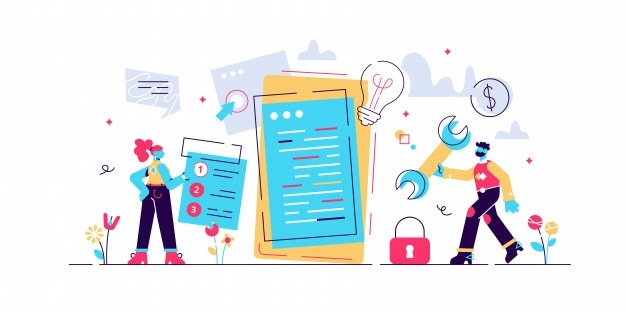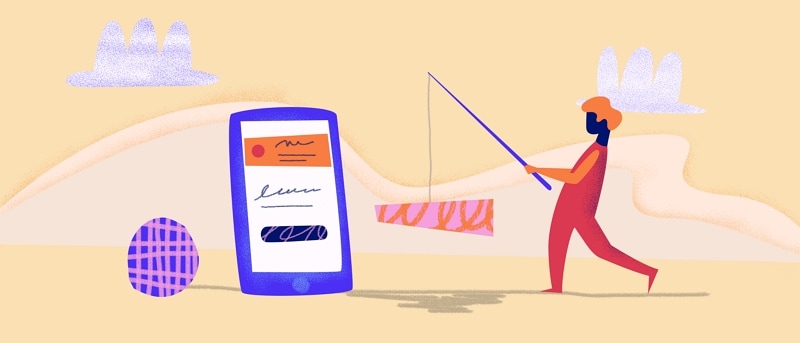Mobile Application Prototyping Processes

A prototype process is the demo or visualization of ideas to get feedback from the users. These mockups are created by using different tools available online. The purpose is to ensure whether we are meeting the criteria of business goals and user needs or not. Then we refine it in final development stage based on evaluation.
Beginners must understand the process of app prototyping due to its benefits of better clarity, simple acceptance, better collaboration, and more predictability.
In this article, we'll study the purpose of mobile app prototype process and its benefits. And how can it help us to protect from potential risks?
What is a mobile app prototype?

There are about 5 billion mobile users worldwide, so mobile experience plays a vital role in creating brand identity in this time. Therefore, for companies that are not aware of the process, they should create mobile app prototypes to avoid potential risks. As a small mistake in the development process can destroy our hard work and money, so due to this process, we get a chance to modify the final design.
Let's take an example if you build a mobile app for android or an IOS users by spending several hours and money on it, and in the end the user doesn't like the style of app icon, color, theme and other feature of the app like zoom touch then what will you do? Here the prototyping process comes to help you.
Prototyping is the fourth step of the design thinking process. A mobile app prototype is the visualization of app design, and its functions which our team members and users analyze. It helps the team to understand the user needs, and to identify the critical design issues. A prototype is an integral part of the process without which the future steps are nothing but useless.
It comes in various forms like on paper, on high tech operational system using CASE (computer-aided software engineering) or fourth-generation languages. It is best to start with sketches. It was never an easy thing to do, but now various software helps the designers in designing.
Purpose of the prototyping process
- As the purpose of your design must be to meet the user's need, otherwise it'll be a useless app, so the iterative nature of prototyping helps you in designing a useful app. The user feedback facilitates in evaluation and can be used to modify the actual product.
- It allows the users to analyze the appearance and the features of the app to check its usefulness and usability. At this stage, do not explain anything as the purpose of the process is to meet users' expectations, and explanation can affect the feedback.
- Other reasons include validating the design product, presenting the idea of your product to investors or licensees, removing minor faults and testing and refining.
Prototyping steps

We will discuss the steps of prototype process briefly in this section. It will surely help you in making a user-centric app design.
Identify Obstacles
It is the first step of prototyping, and you do brainstorming with your team to identify the obstacles that can create problems in future. Before starting prototyping, make sure that you have identified every problem and goal. And you are aware of the requirements of the process and expectations of the users.
Select the Features
In this step, you'll create a simple app design, and this design is not complete. It is a simple design with 1 or 2 essential features for the easy understanding of the users. Also, it helps in getting constructive response, and to refine the goals. Otherwise, a complicated design can make it difficult for the users to understand.
Sketch Your Design
At this stage, you'll create an actual prototype on the base of first two steps. It is the best practice if you start the rough sketching of your design on paper first, although there are other tools available online that you can use to create designs.
Some of the famous tools are UI mockups, proto.io, adobe XD, fluid UI, Sketch, JustInmind, and InVision Studio. There are some other tools too.
Share Your Design
At this stage, share your design with stakeholders, clients for evaluation. Ask for their constructive feedback, as it'll help you identify the strong and weak points of your design. Get all comments and suggestions with positive vibes to make it perfect in the next step.
Continue to Develop
It is the step where you use all the comments and suggestions from the previous step and refine your prototype process. You will repeat these steps several times to meet the users' requirements. After completion of the prototype process, you can finalize the app design.
Types of mobile app prototypes

Prototyping process consists of two categories of low fidelity prototypes and high fidelity prototypes.
Let's take a brief overview of both processes to get a clear understanding.
Low-Fidelity Prototypes
Low fidelity prototype is quick, and simple way to get feedback at early stages. The only requirements in this process are pen and paper to turn your ideas into app designs. The main uses of this process are to check and test the functionality of the app. It includes only some of the visual attributes and the key elements of the final design.
Benefits
- It is inexpensive, and a low fidelity paper prototype process takes only five to ten minutes without investing too much effort.
- It can help in brainstorming as the process doesn't require any special skills so everyone can take part in it.
- It gives clear expectations of the final product.
- It gives you a chance to refine your idea in real-time based on evaluation.
Low fidelity prototyping techniques
You can use a variety of methods in this process.
- Paper Prototyping
- Animations
- Clickable wireframes
- Diagrams
High-Fidelity Prototypes
This process is more interactive, realistic, and functional than the low fidelity one. It is closer to the actual product with developed elements. The main reason of this process is to find out whether you have a clear understanding of the goal or not. And to test it with real users or share it with stakeholders.
Benefits
- It makes it feasible to give detailed information of features using graphic elements like animated transitions and micro-interactions.
- It makes the users to interact it with more efficiently and respond more effectively.
- It gives a clear idea of the final design and expectations from it to the investors and clients.
Methods
- Physical Models
- Interactive UI mockups
Conclusion
Prototype process must be an integral part of the app design process to meet users' needs and business goals. It helps the team to come up with many solutions of a single problem. It also makes it feasible to get a perfect mobile app by following all these prototyping steps and using feedback effectively. Also select the suitable method of the process, whether it is a low fidelity process or high fidelity based on resources available and usability.

